Aloha everyone, Welcome to my work station of Niʻihau creation (ニイハウ シェルの創作), where I share my process, my thoughts, and the little stories behind each piece I make.
After finishing Lei 2005 along with my Double-Double Pikake style (ピカケスタイル) blog made with Momi shells, I felt a new wave of inspiration. Sometimes after working so hard on one piece, the next idea arrives almost immediately, as if the creativity is already warmed up and ready to continue. That is exactly how Lei 2007 was born.
This time, I wanted to create something a little different — something that blends two styles and two shell types. I decided to begin with a Poepoe section made with Kahelelani shells (カヘレラニ) in the center, and then follow it with Double-Double Pikake sections made from Momi shells (モミシェル). Because this design mixes both styles and both shell types, I feel it deserves a name that reflects that combination. I’m calling it the Double-Double Kipona. The name feels right for the spirit and the blending of this design.
If you are new here, or if this is your first time visiting my blog, you may enjoy starting with a few helpful topics such as:
• What are Momi shells
• The colors of Momi shells
• The styles used in Niʻihau shell jewelry
✨These will give you a gentle introduction before you continue this behind-the-scenes journey with me.
Planning the Momi and Kahelelani Shell Sizes and Colors
Whenever I work with four-strand Momi Pikake, those sections naturally become full and round, even with the smallest Momi shells. To balance that fullness, the Kahelelani center needed to be bold and strong. So I poured out a generous scoop of Kahelelani shells, hoping I would be lucky with the larger sizes.
But once I began shaking them through the sizing tray for size 15, almost every single one slipped right through. One after another — gone — until only a tiny bit were left. I looked at that little group, shook my head, and laughed. What made me think I was going to be that lucky today? Every Niʻihau shell maker knows that moment.
Photos show the Kahelelani shells side by side — the ones in the sorter and the shells left in that size.


I chose the remaining larger shells and planned to blend into size 14.5 and size 14 so the transition would stay natural. I double-checked the colors, set aside any cracked or chipped shells, and noticed most of the larger ones were Keʻokeʻo with a soft green tint. It felt calm and pretty, so I made that my base. Later, I planned to add a few pearl-tone Keʻokeʻo shells for a gentle glow.
Searching Through My Shell Collection for Kahelelani
When I searched for more size 14.5 shells, the same thing happened — most slipped right through. That alone reminds you how rare these larger Kahelelani sizes are. Even with a big collection, you never find many that stay behind.
Photos show the Kahelelani shells side by side — the ones in the sorter and the shells left in that size.


But I didn’t walk away empty-handed. I found a small batch of pink and green shells that matched enough for both sides. They weren’t the sizes I first imagined, but that’s part of Niʻihau shell work — you adjust, you blend, and you let the shells guide you.
The Real Work Begins: Poking, Adjusting & Preparing the Thread
Then it was time to poke. I reached for my favorite handmade poking tool (貝殻ポーキングツール) — the one with the teak wood handle and beautiful grain. It fits perfectly in my hand, and I use it every day for both Momi and Kahelelani shells.
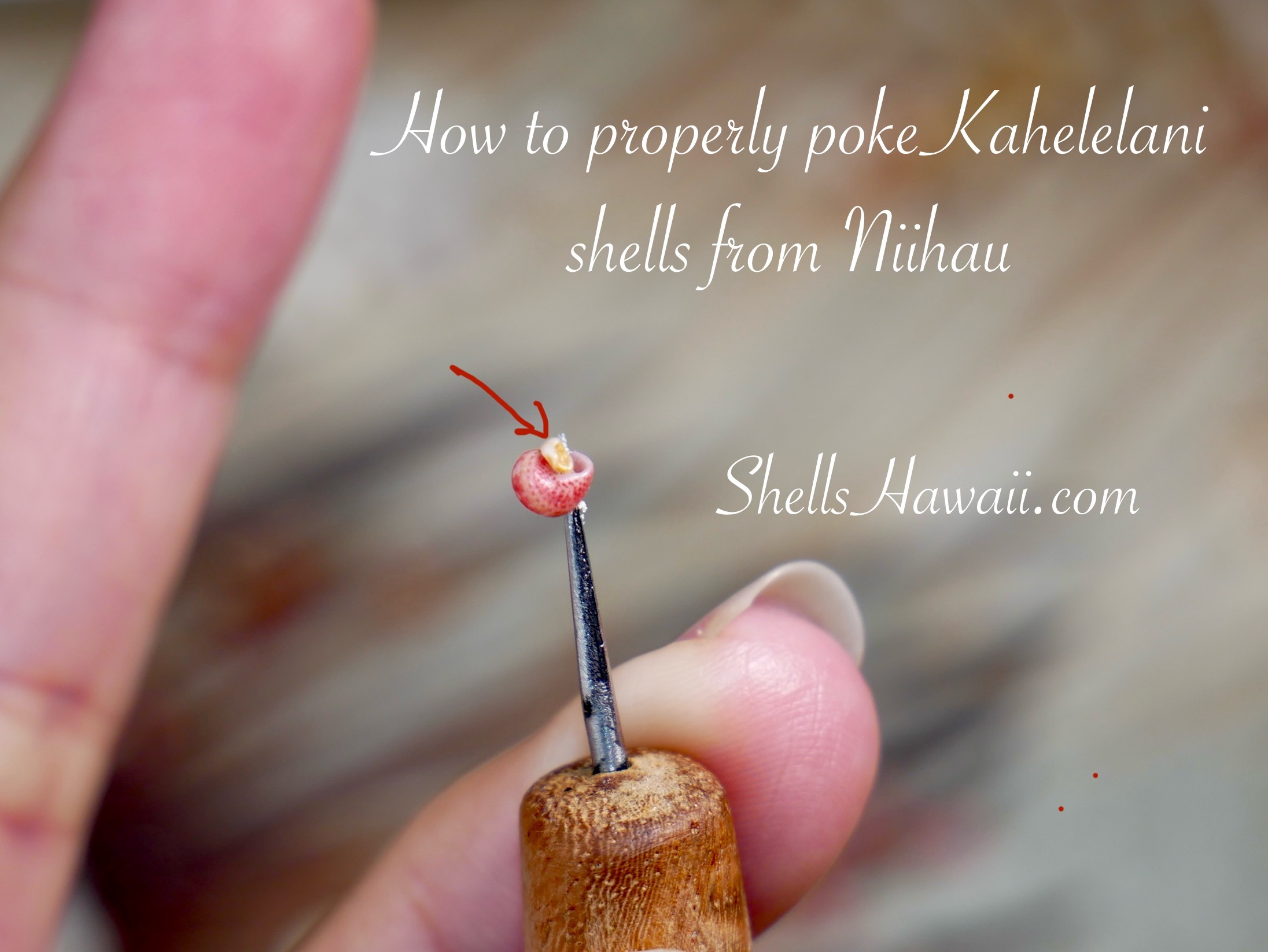

Since the shells weren’t all the same size, I poked a few, strung a few, looked closely, adjusted, and continued — over and over. It’s slow but peaceful work. Each shell teaches you something about its strength, softness, or attitude.
I also prepared four strands of thread at 75 inches each. I like having extra because I trim often to keep the tips sharp, and sometimes the lei grows longer as the pattern forms.
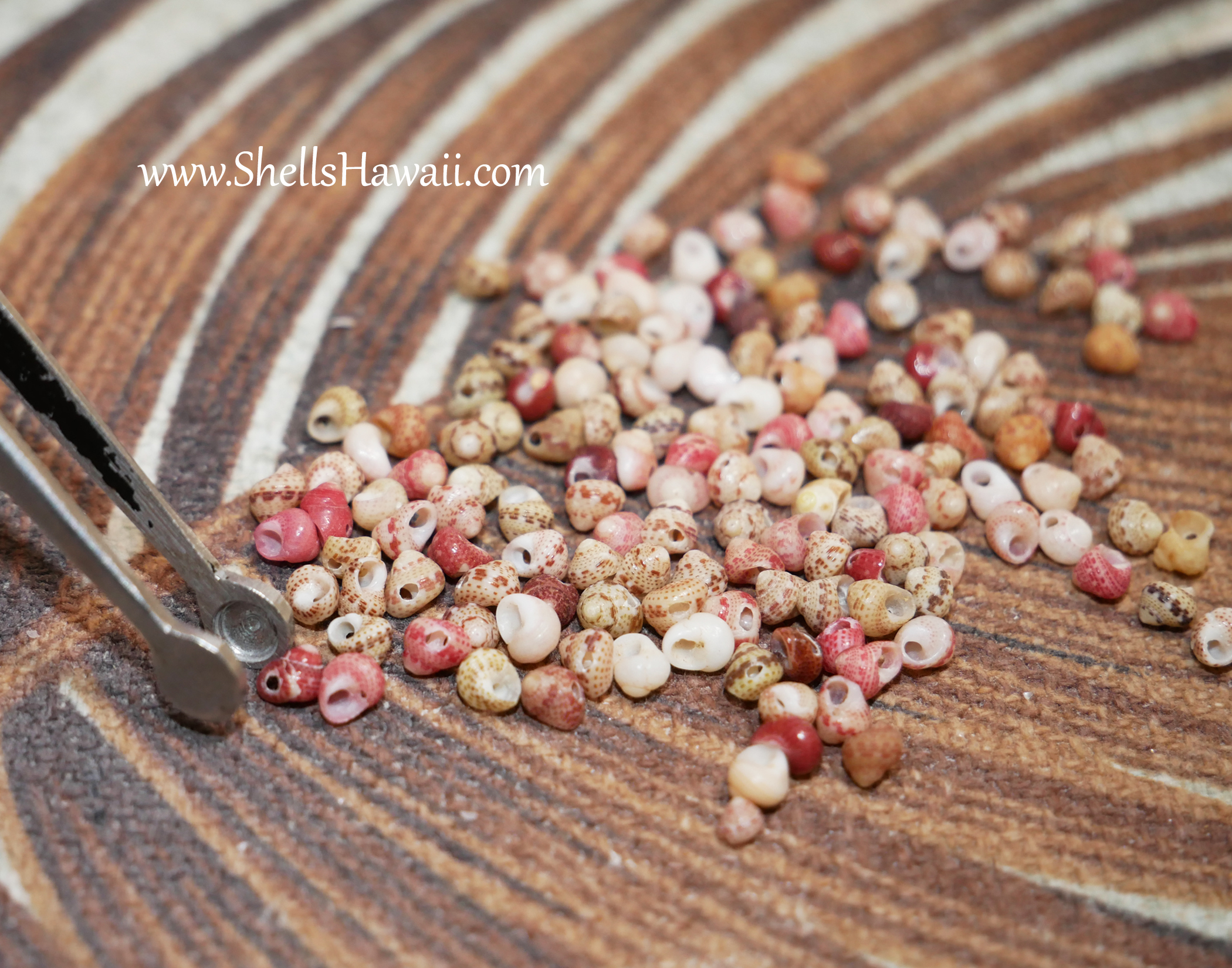

Stringing Kahelelani in poepoe style from the Center
Then came the moment I always look forward to — placing the first shells. I always begin my leis from the center. For Lei 2007, that meant starting with the Kahelelani Poepoe section.
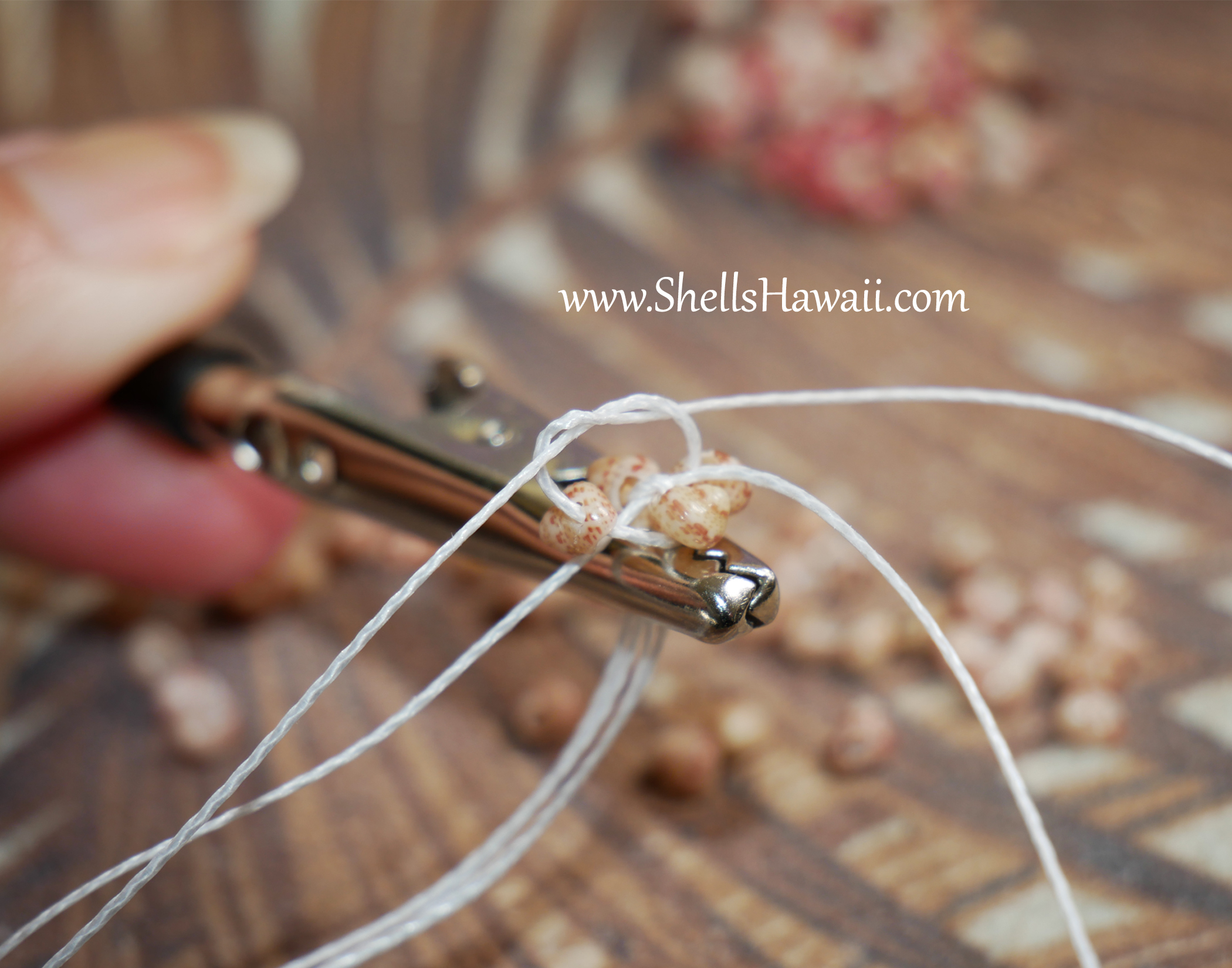
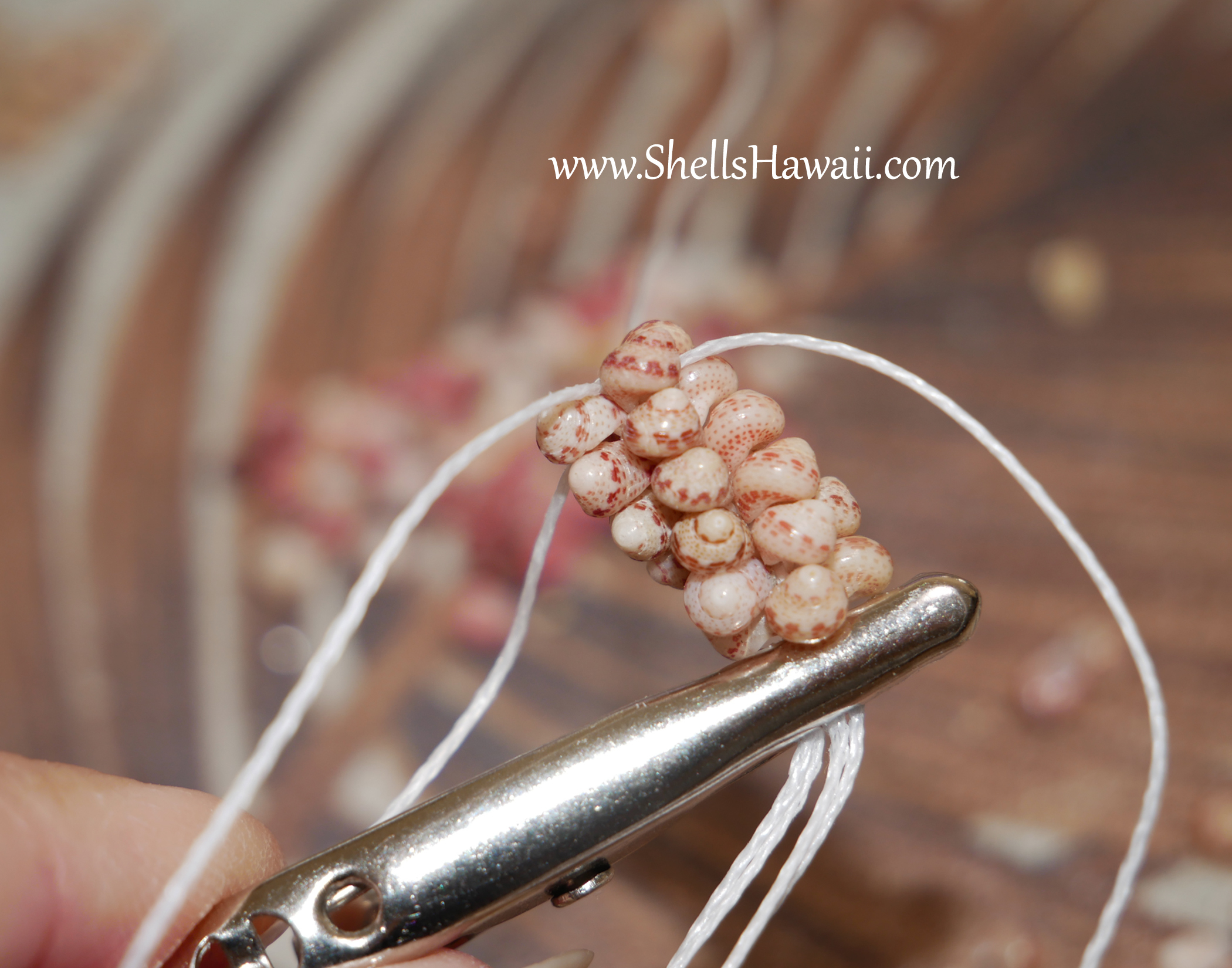
After about ten rows, I paused. Something felt like it was missing. The center needed a focal point, something with presence. So I checked my Tahitian pearl collection and found one beautiful peacock-colored pearl. It felt perfect — the color, the size, the personality. I adjusted the surrounding shells so it would stand out, then continued down the other side, counting and recounting to keep everything matching.
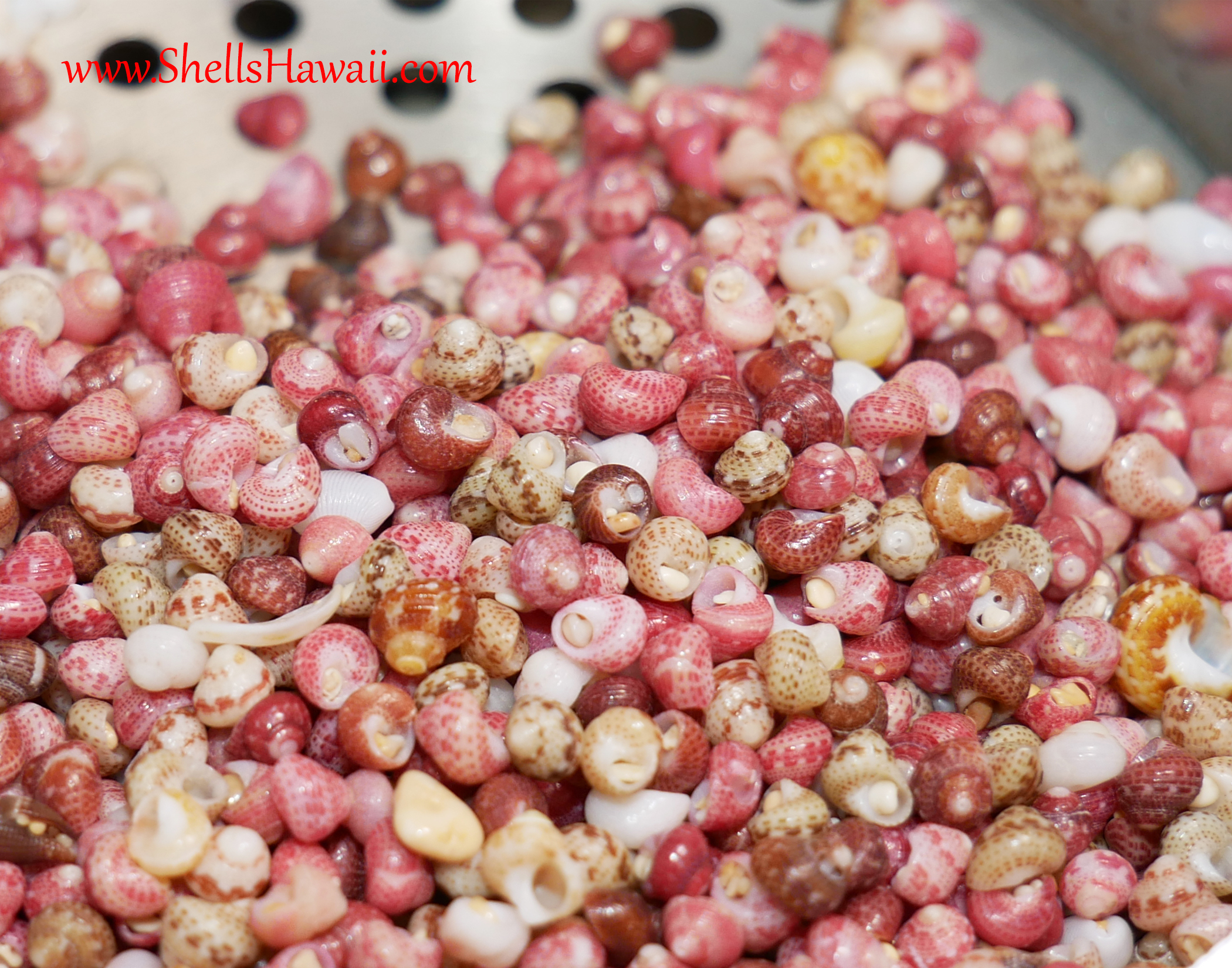

✍️ A little tip, good notes help so much — number of rows, colors, sizes, transitions — they save your memory when you return after a break.
The True Challenge of Niʻihau Shell creation
This art form isn’t simply poking shells and stringing a lei. If it were, everyone would be doing it. Every shortcut shows immediately. Every rushed decision appears in the final piece.
Niʻihau shell jewelry asks you to slow down. The patience, the sorting, the careful checking — most of the work happens before the thread even touches a shell. The beauty of the finished lei comes from these quiet decisions made early on.
How to Trim Yellow Kamoa Kahelelani to the Size You Can Use
Yellow Kamoa is one of the most beautiful colors you can add to a lei, but many Yellow Kamoa shells come in large sizes and must be trimmed before use. It’s the only Kahelelani color you can safely trim, but trimming must be slow and careful — a tiny bit at a time.
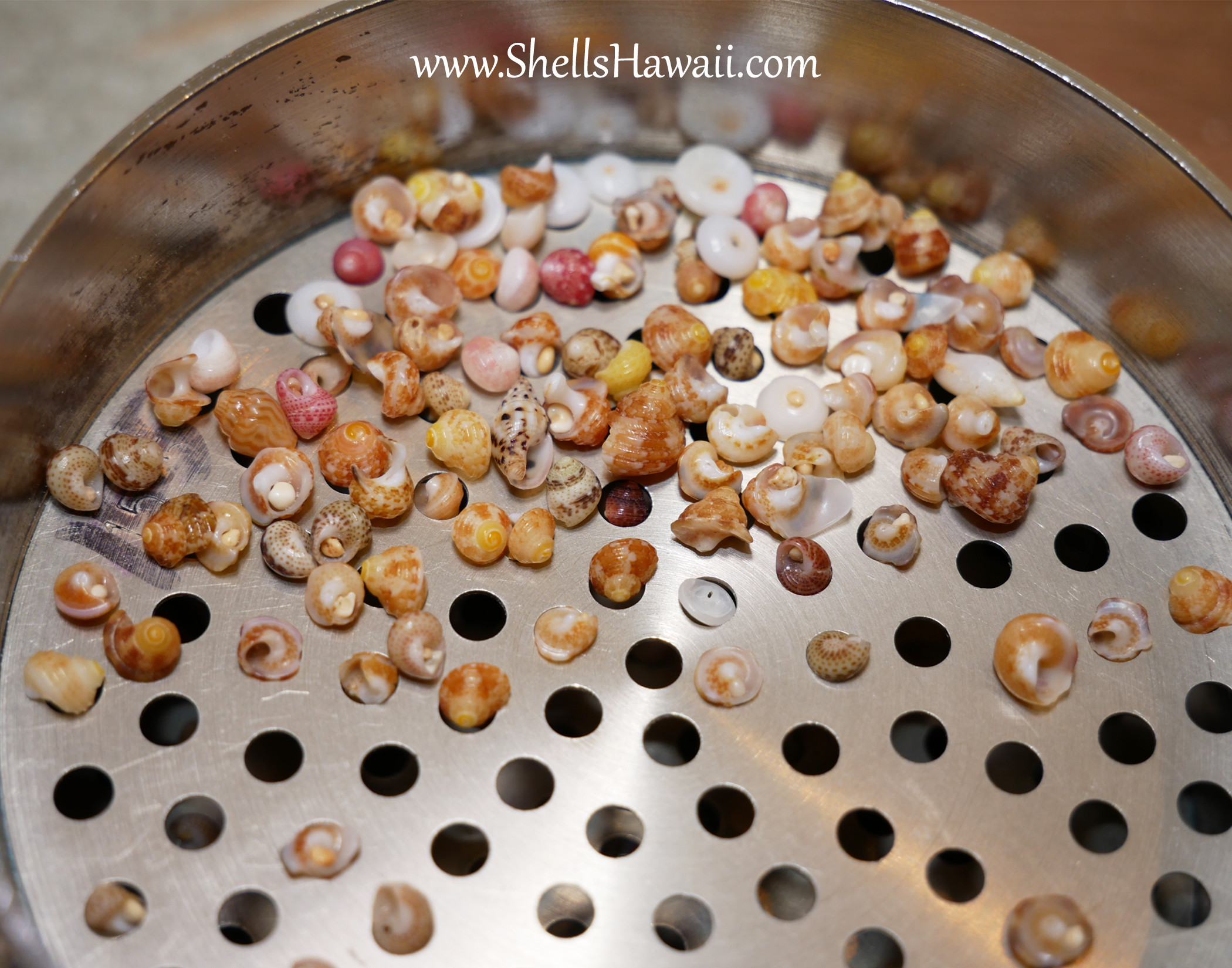
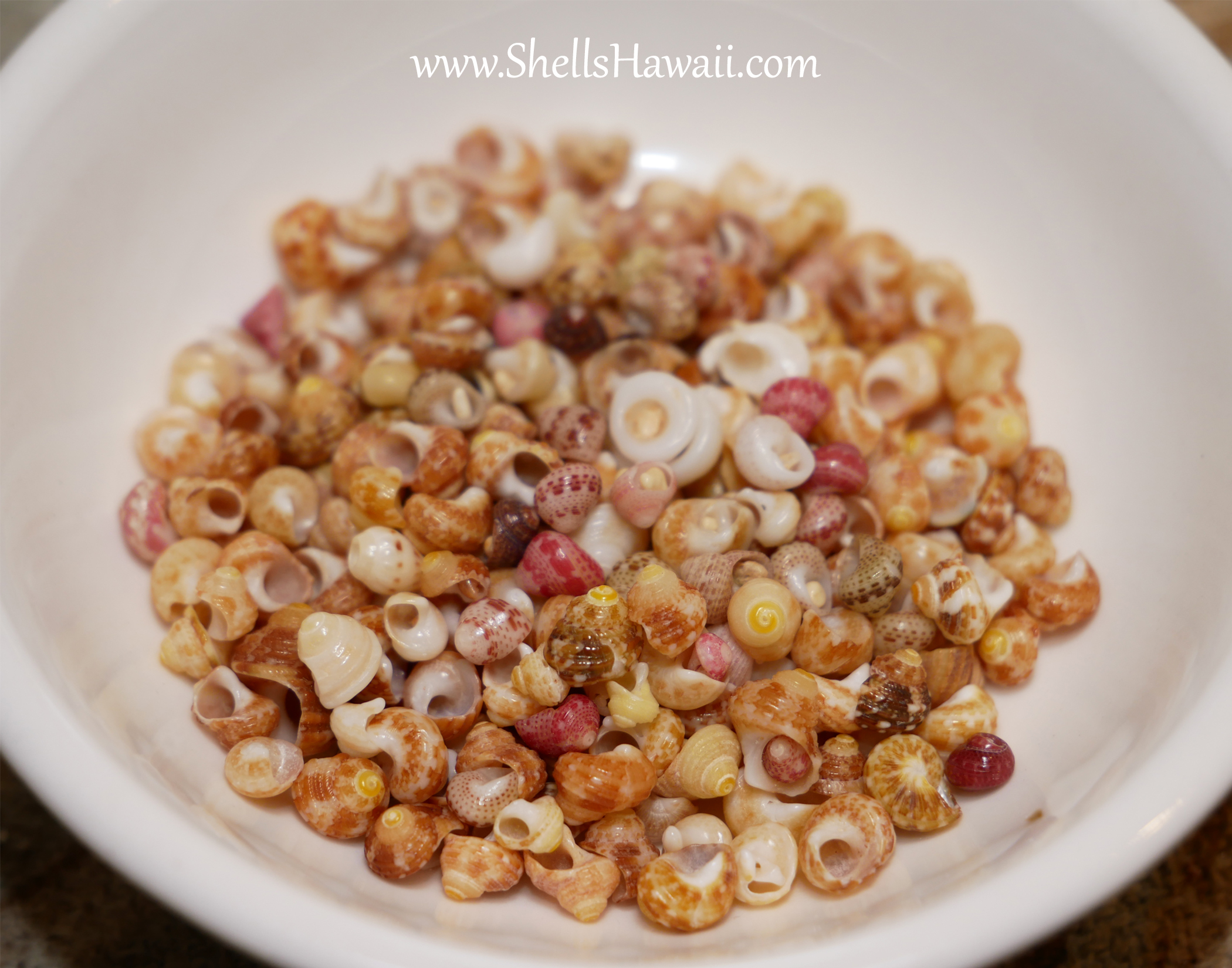
Trimming can leave sharp edges, and you cannot leave them like that. If the edges aren’t smoothed, the shells won’t lay flat once tied, and they can even cause a little discomfort when worn.
I use a very fine file to gently sand the edges until they are smooth. It takes time and patience in this step, but it makes a big difference in the comfort and quality of the finished lei.

More Adjusting Kahelelani Shell Sizes for the Balance of the Poepoe Section
To continue the Poepoe section, I now had to switch to the next size — and it looked like my luck with size 14.5 wasn’t much better than size 15 either lol. After shaking the tray, only a few shells stayed behind. This really shows how rare sizes 14 and above truly are.
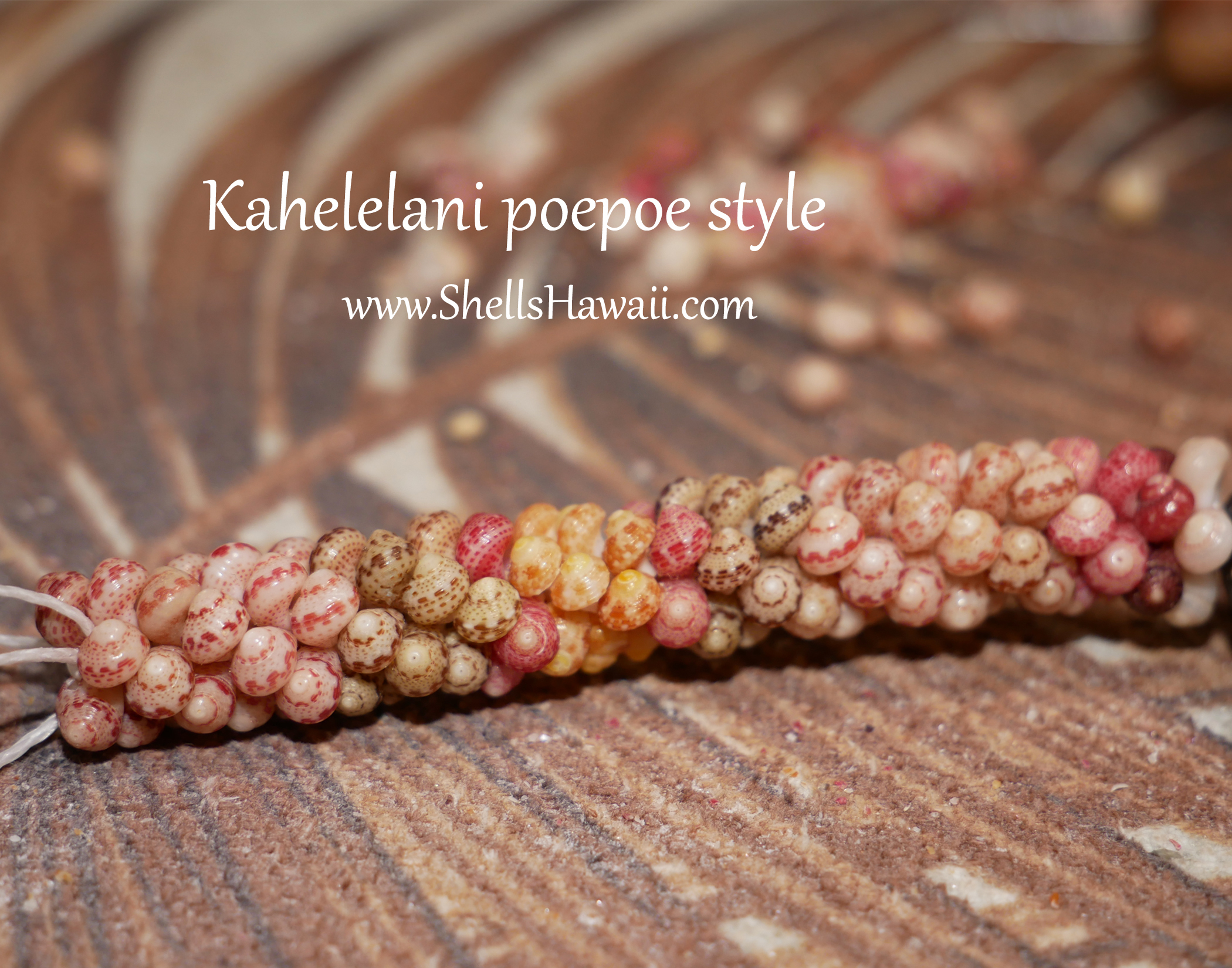

But I did find some Kahelelani shells in the sizes and colors I needed — some pink and some green that matched well enough to continue the pattern. They weren’t the exact sizes I hoped for, but the blend was beautiful. This is the part where your eyes, your instincts, and the shells guide the next step.
While I was searching for more shells in the right colors, I was also sorting out the imperfect ones from my collection — the ones that are too thin, chipped, or just not strong enough for a lei like this. I always separate them right away so they don’t get mixed back in. I save these imperfect shells for Christmas time and give them away to people who can still use them for small projects or crafts.
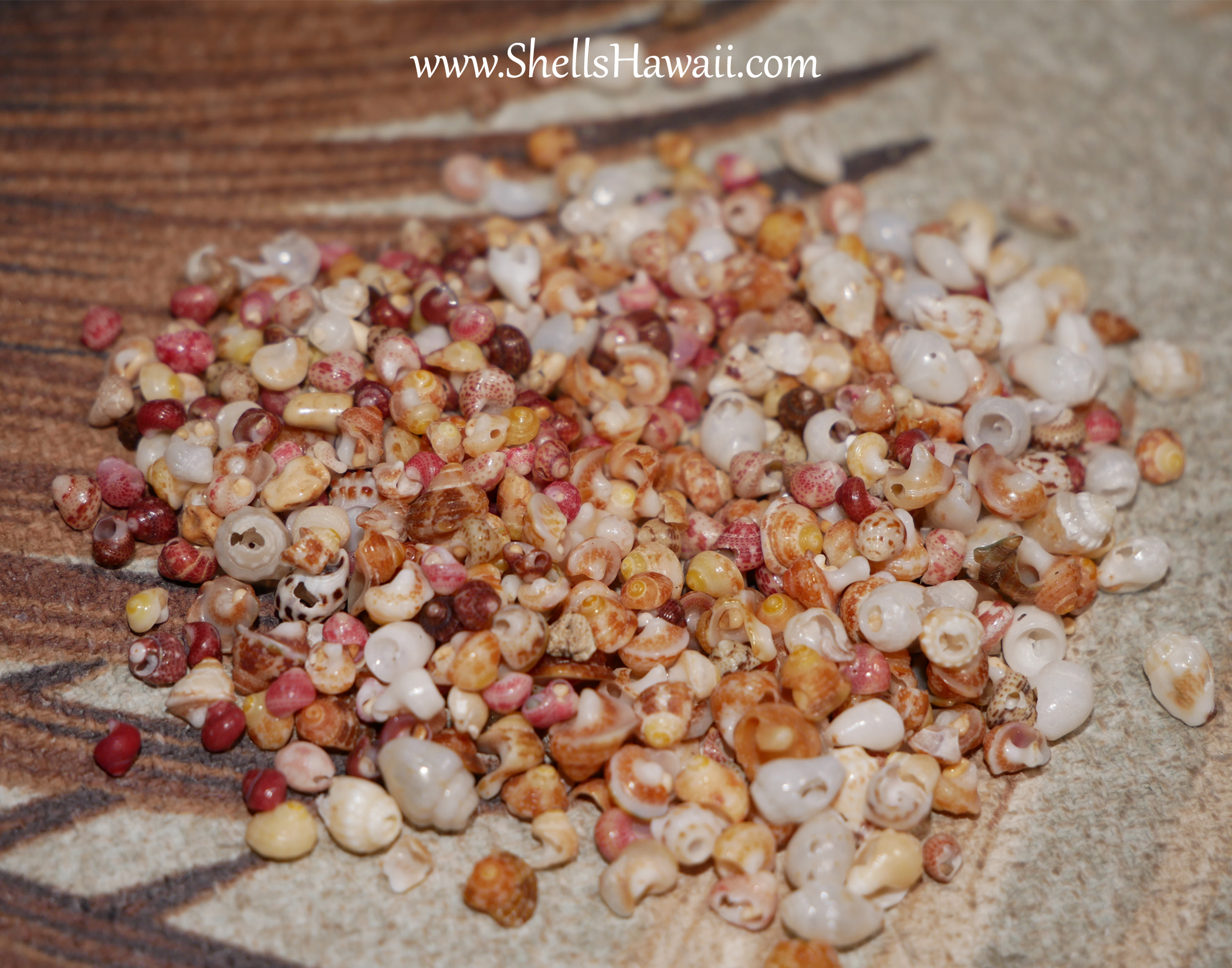
The Hidden Challenges of Poking Kahelelani Shells
Even when you use Kahelelani shells from the same beach, that doesn’t mean they all have the same thickness. Some have a soft layer where the needle slides through easily. Others are so hard that even gentle pressure can make them crack instantly.
While working on Lei 2007, I found many shells with strong layers that broke while poking. I also found quite a few imperfect shells — chipped, too thin, or simply not usable. Those go into my “imperfect shells” pile, and I give them away during Christmas to people who can still use them.
Larger Size Momi or Kahelelani Shells Don’t Mean They’re Easier
Many people assume that bigger shells must be easier to work with, but that’s not always true. Larger shells often have a thicker layer because they survived long enough to reach their potential adult size. When they get bigger, they also develop a larger waha (mouth), which can hold bigger grains of sand inside. And if that sand sits at the wrong angle and your needle hits it, the shell can snap instantly.

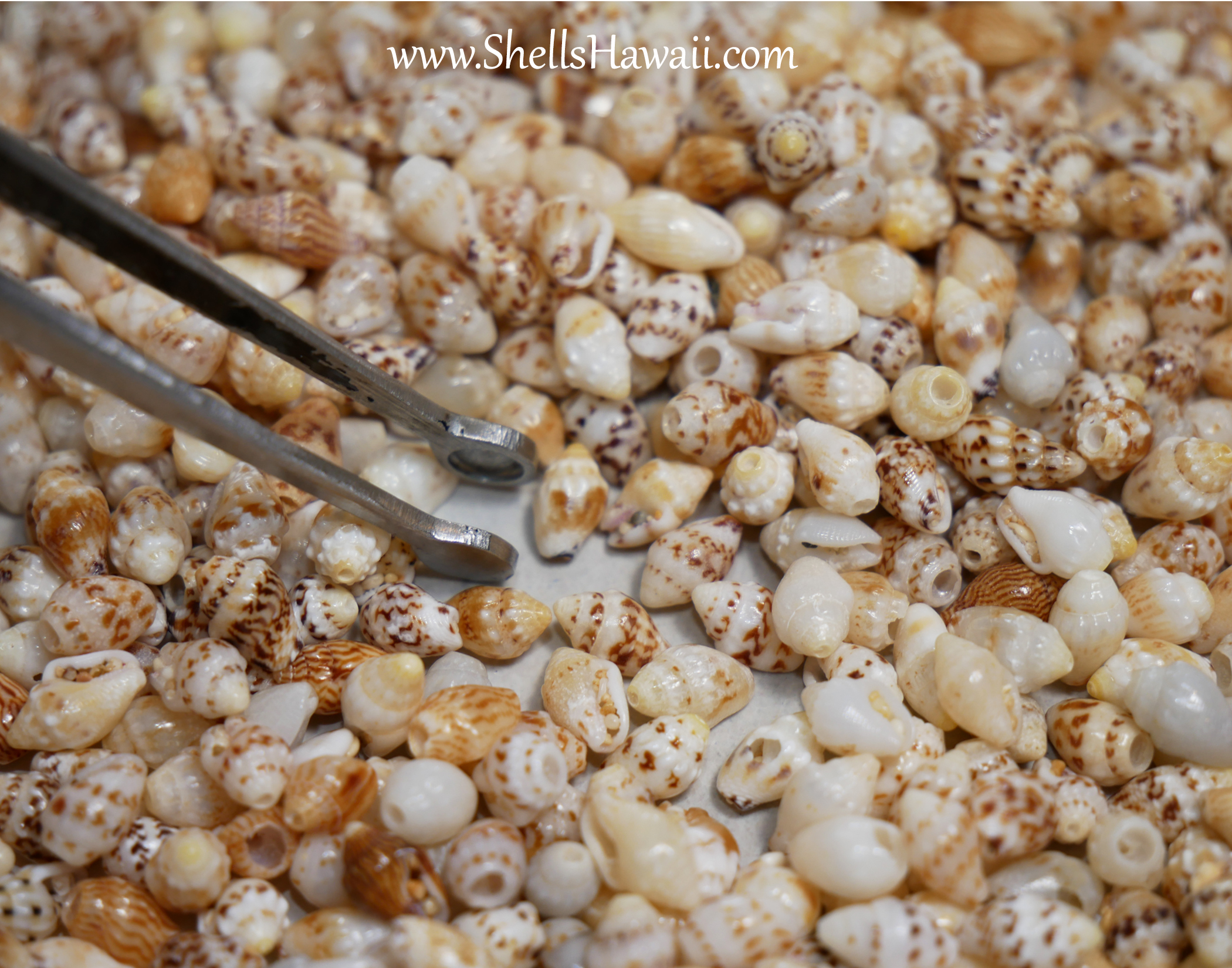
Smaller shells are usually easier to poke because the layer is thinner, and the most beautiful colors often come in the smaller sizes anyway. Over time, I learned to enjoy working with the small ones. It feels natural now — almost relaxing.
Completing the Kahelelani Poepoe Center Section
The center turned out even more beautiful than I imagined. My original plan was around five inches, but once I reached that point, I could feel the lei needed more color and movement. So I continued, and the center naturally grew to eight and a half inches. The colors blended together with a warm, lively feeling — almost like autumn.

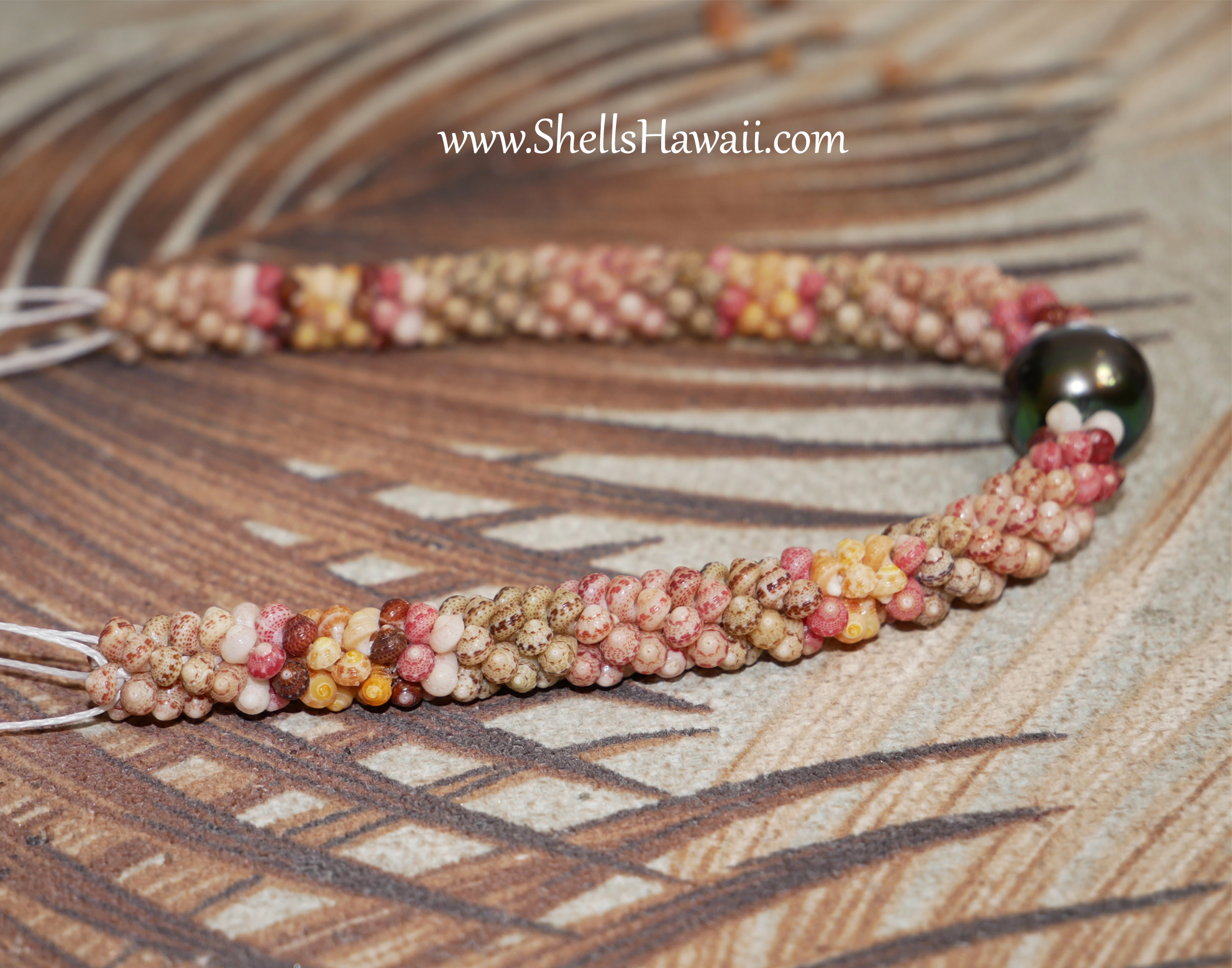
After looking at this beautiful center section of Kahelelani poepoe, I felt excited to choose the perfect Momi colors to carry that energy into the next section.
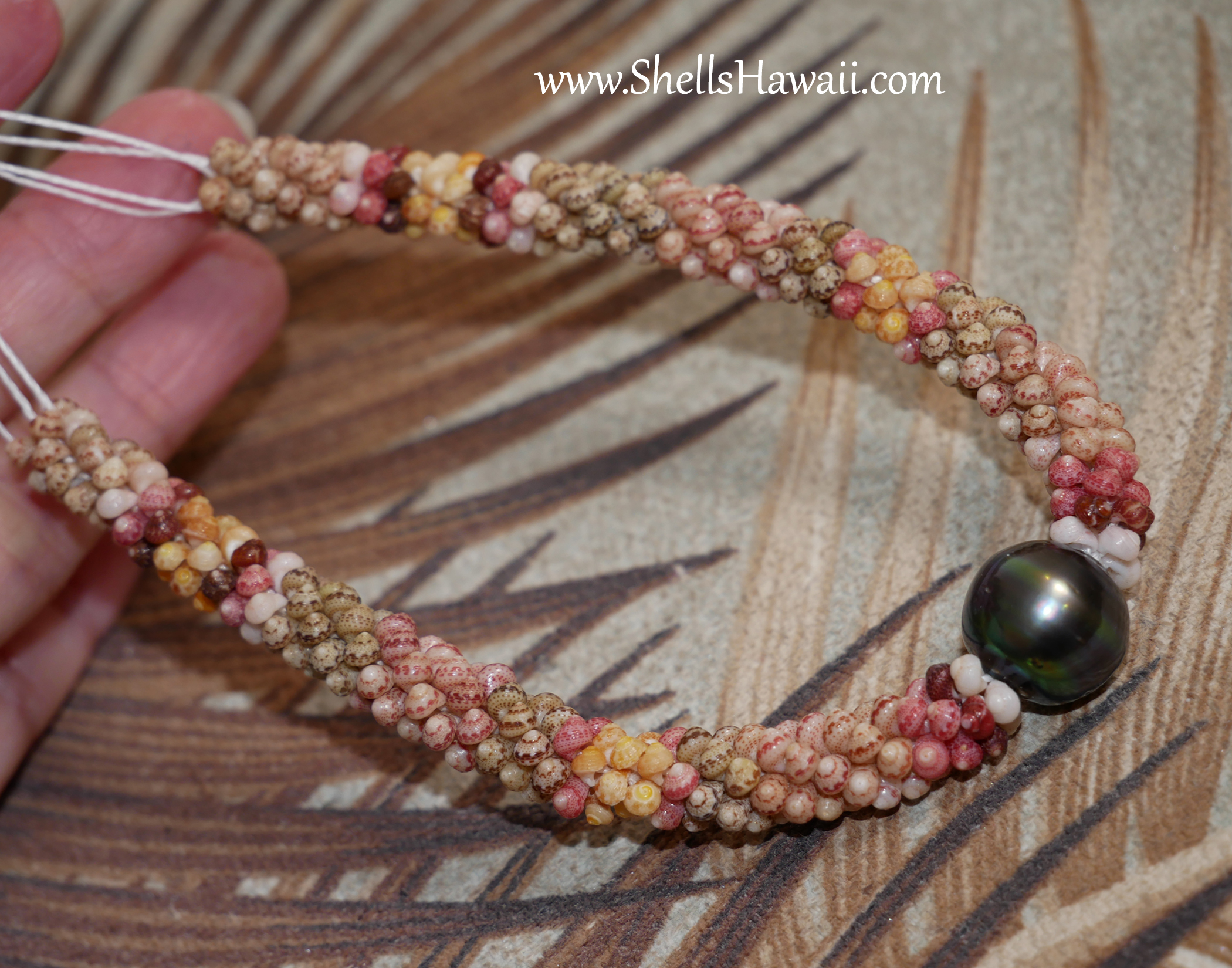
Blending Into the Momi Double-Double Pikake
I continued with the smallest Momi shells — Lenalena yellow, light blue ʻUliʻuli, and off-white. Once I began stringing them into the Double-Double Pikake pattern, the colors blended into a soft ombré. The transition from the warm Kahelelani center into these delicate Momi shades felt natural and gentle, almost like the sky lightening at sunrise.
Here’s how the Double-Double Pikake section came together — from the loose yellow lenalena Momi shells I prepared to the finished weave.
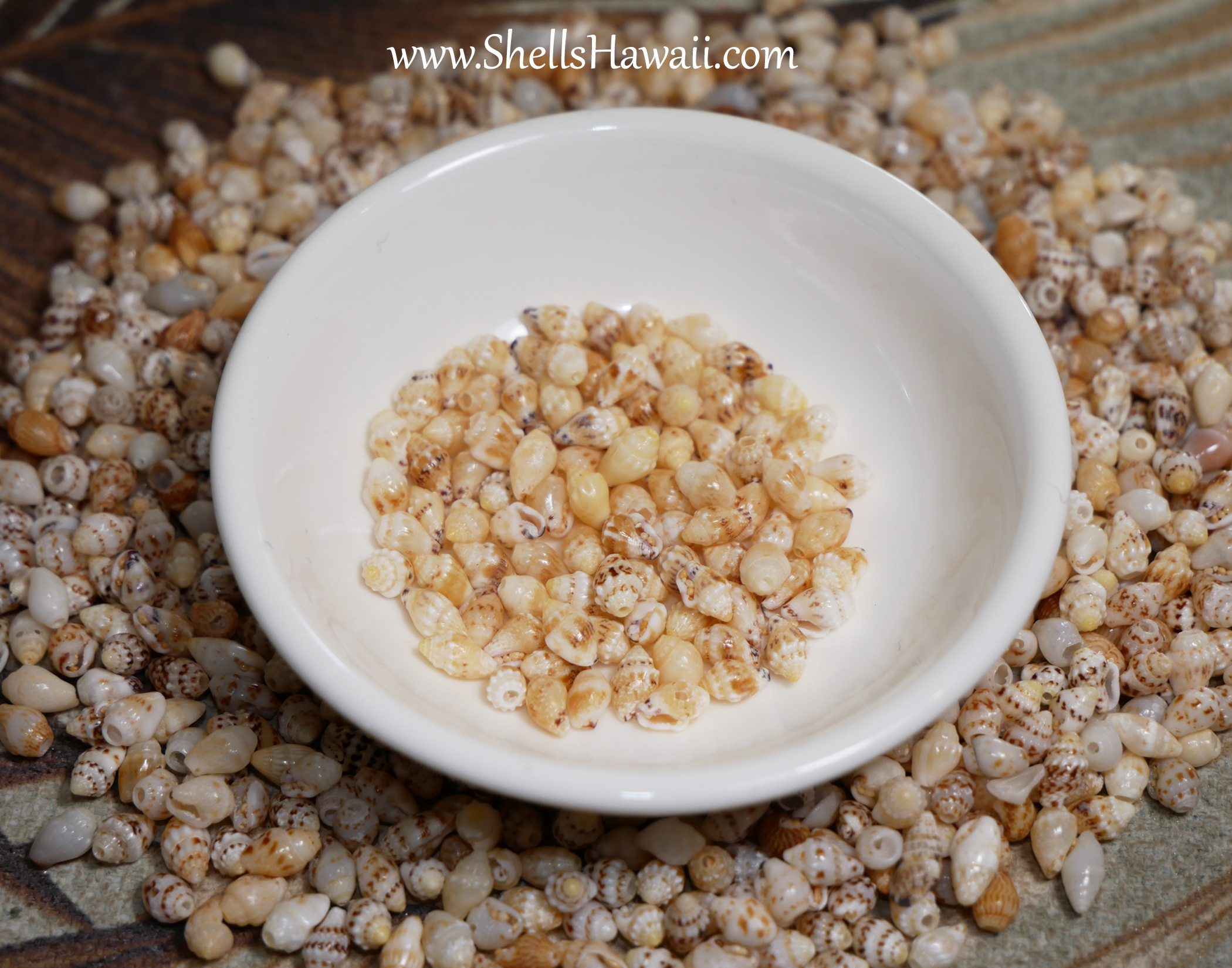

Here’s how the Double-Double Pikake section came together — from the loose light blue uliuli Momi shells I prepared to the finished weave.

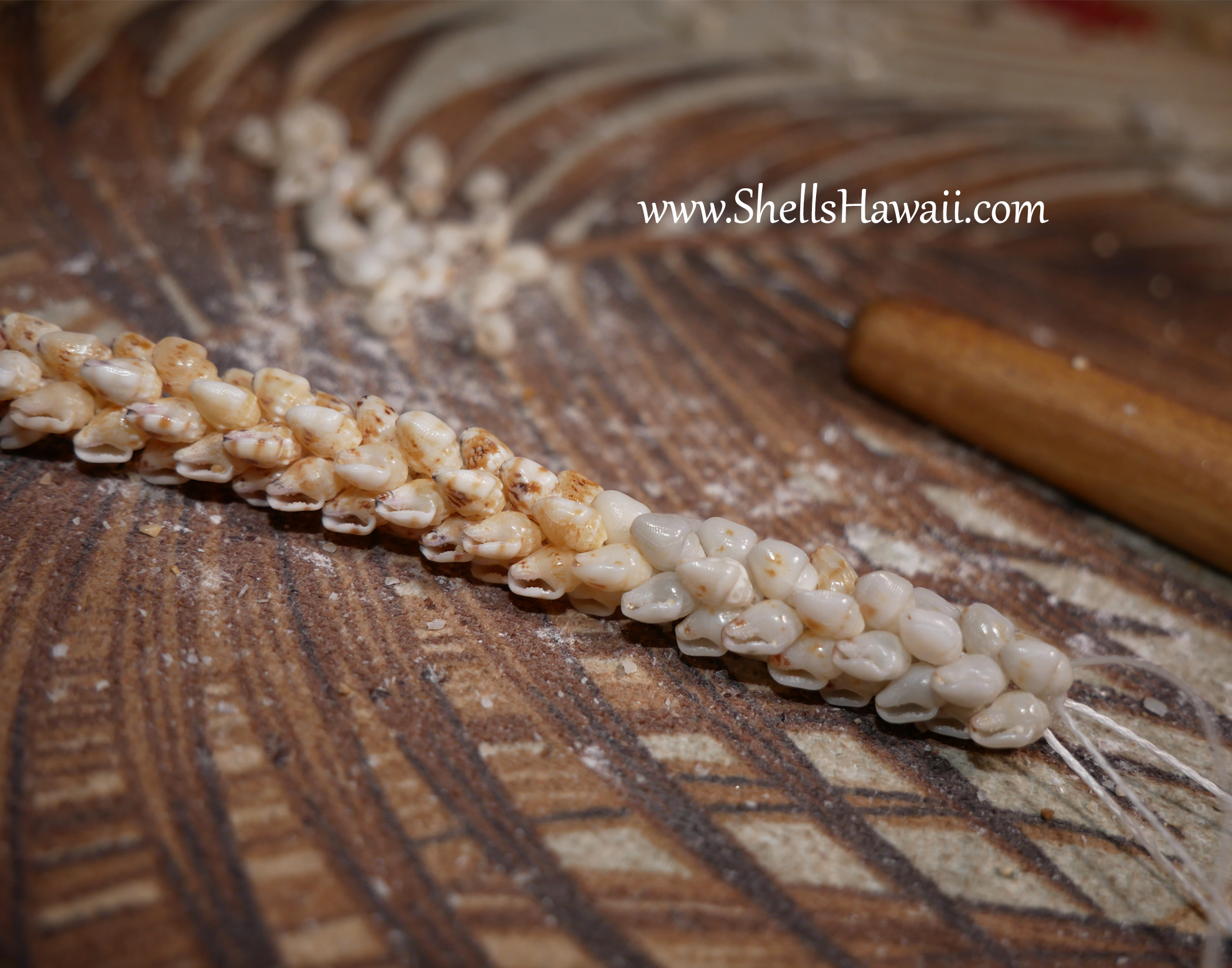
Here’s how the Double-Double Pikake section came together — from the loose off white Momi shells I prepared to the finished weave beside them.

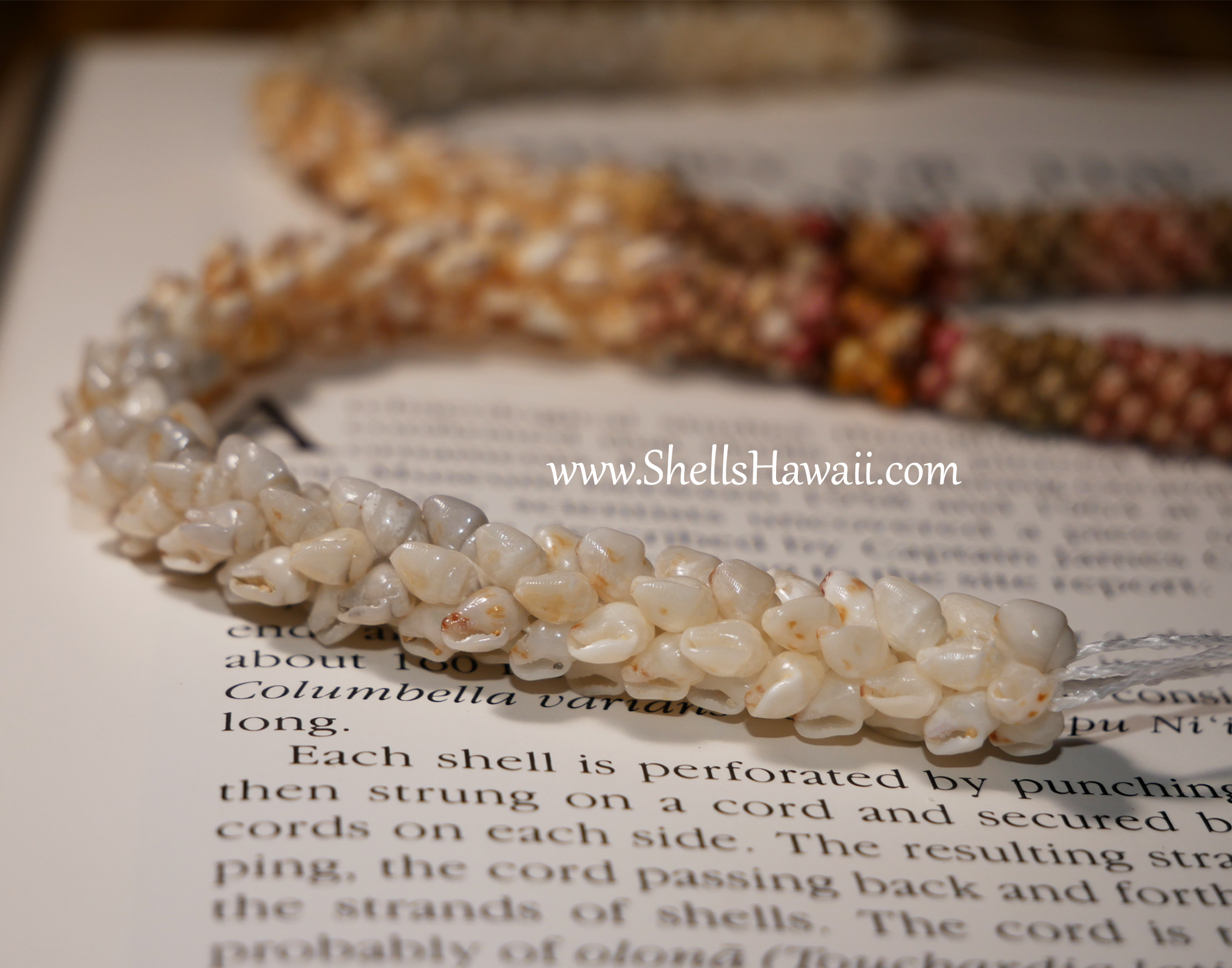
✨ For the clasp, I feel a traditional Granulated cowrie in brown will bring out the warmth and richness of the lei.
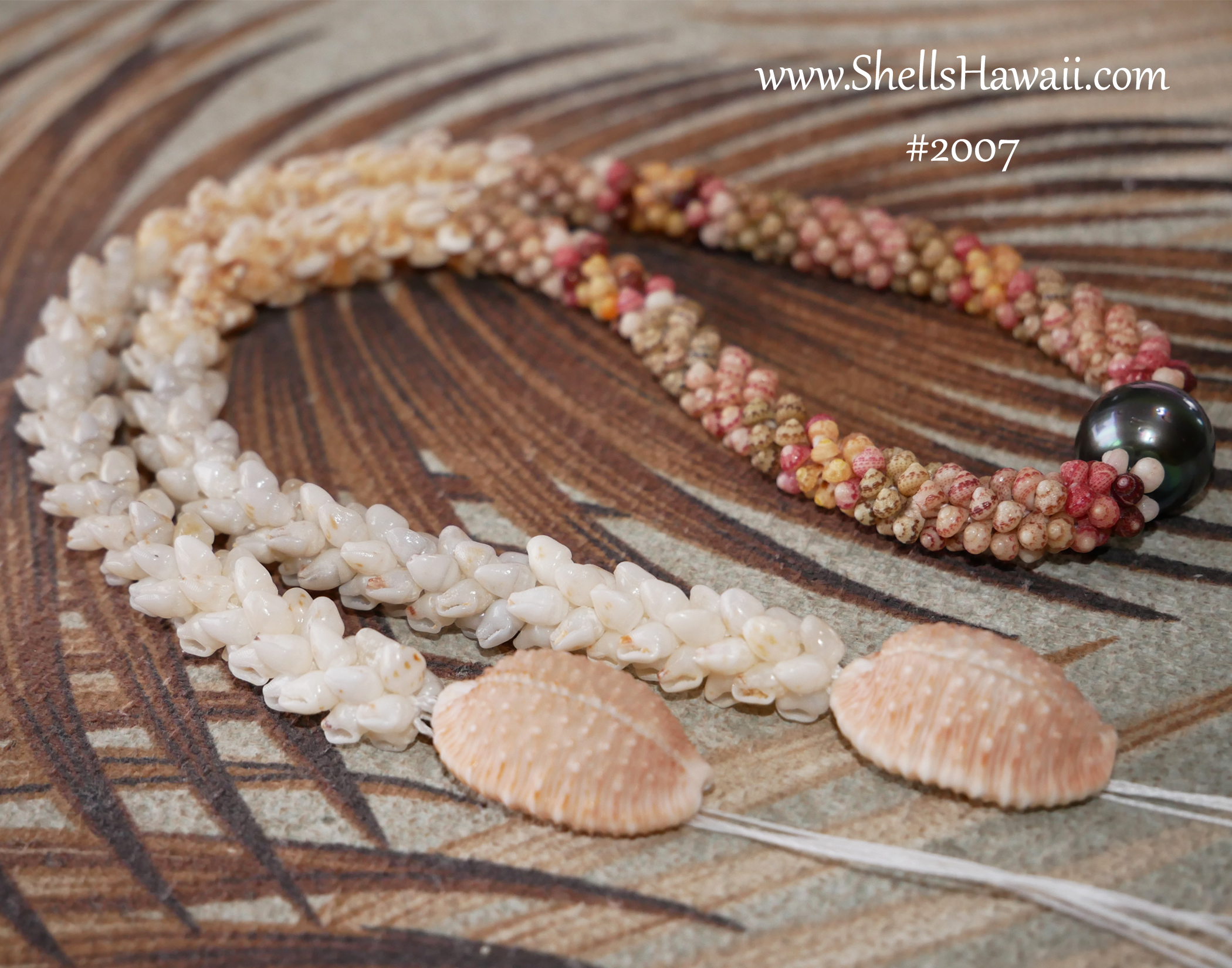
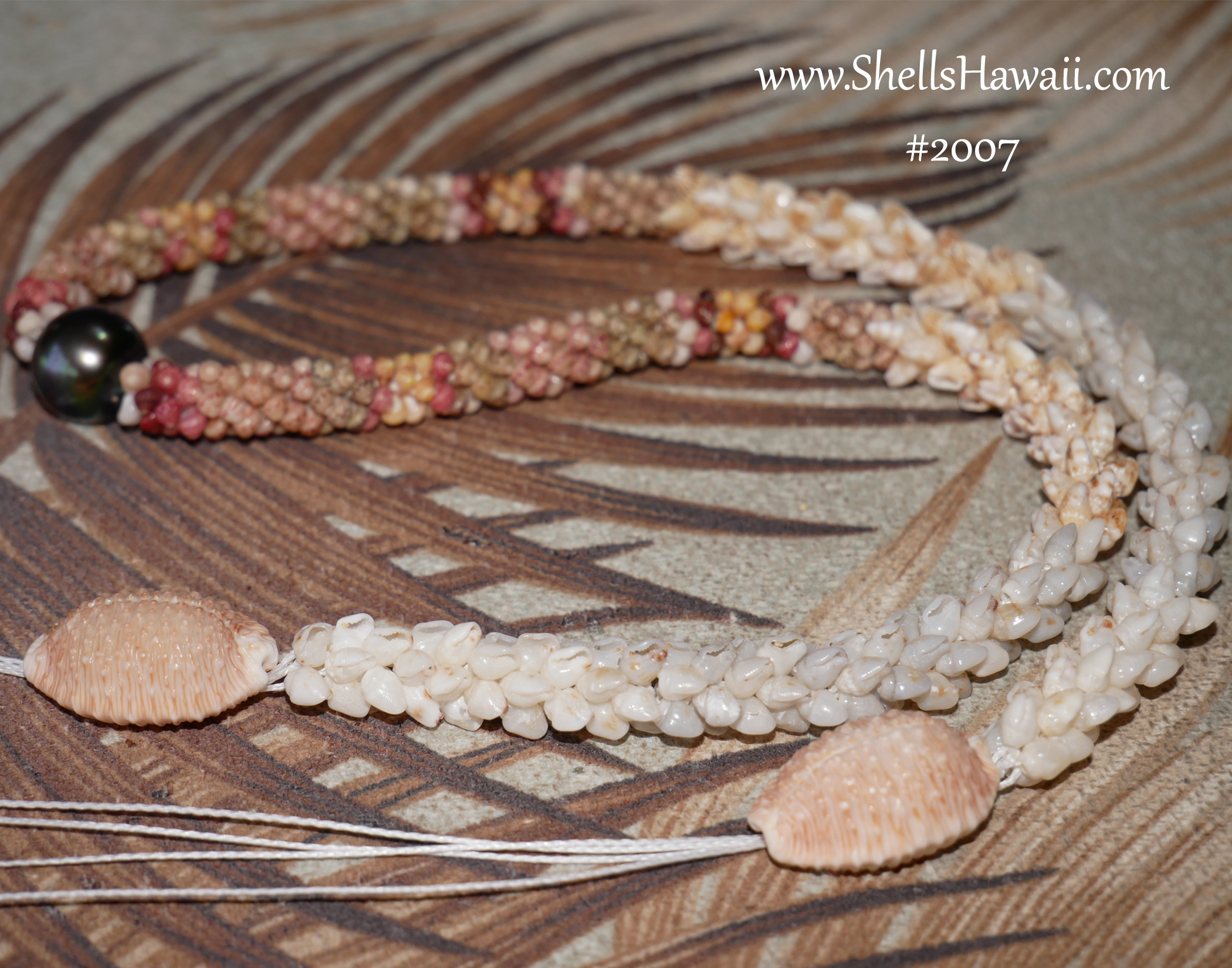
➡️ If you would like to learn more about this lei or bring it home, please click here for more information.
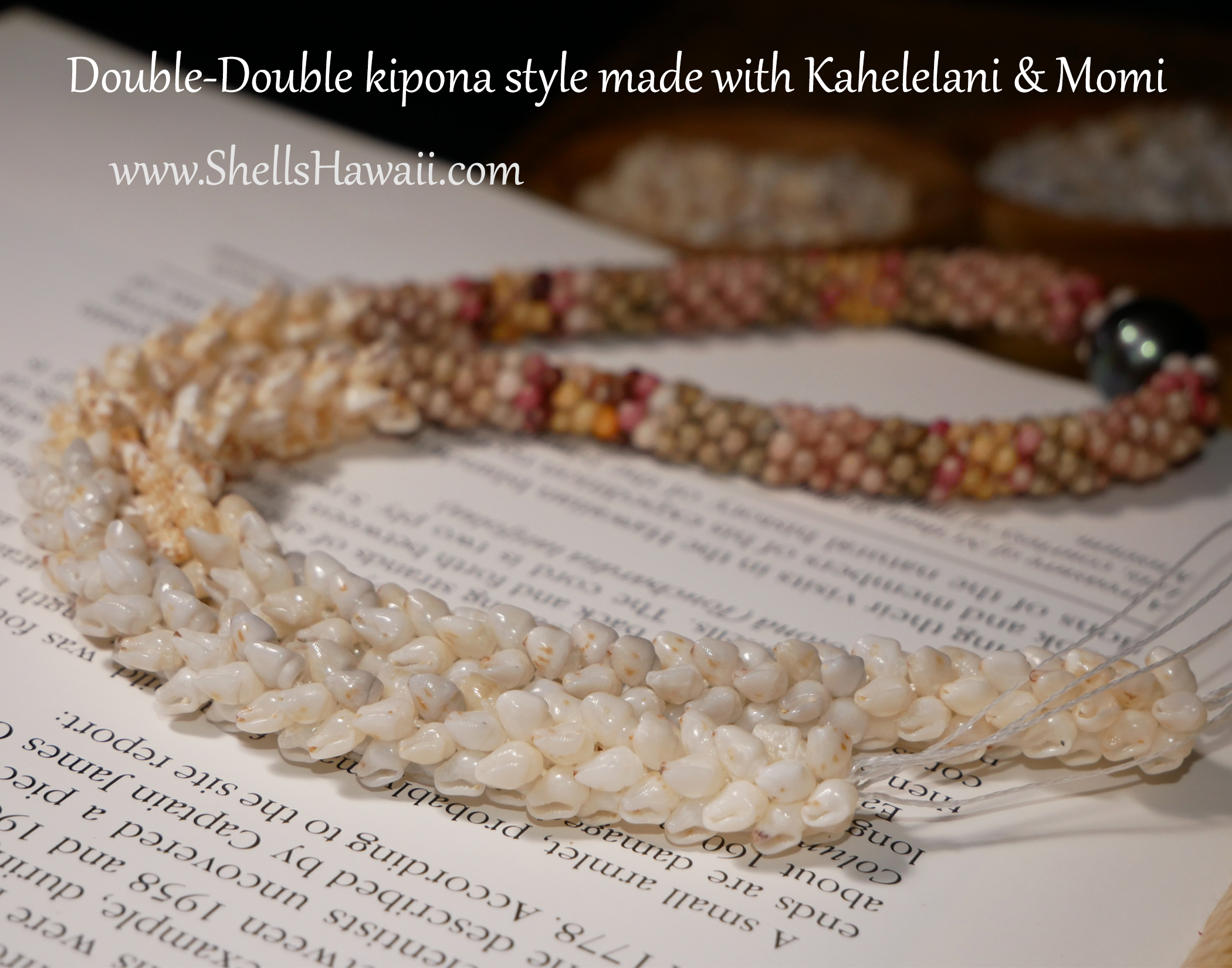
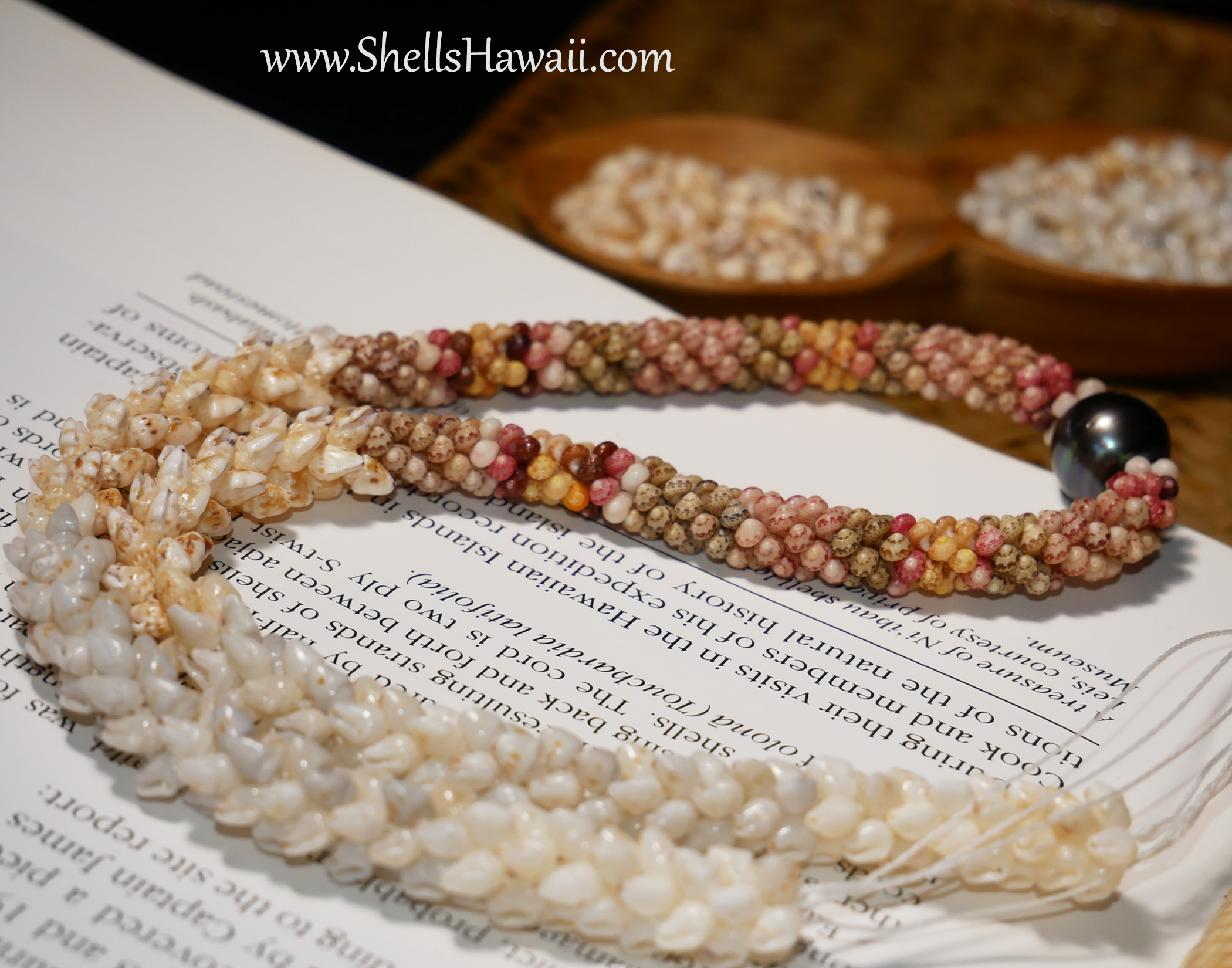
Why Niʻihau Shell Jewelry Holds Its Value
As you’re reading the process of how I create this beautiful lei — the sorting, trimming, cleaning, poking, pairing, and adjusting — you can begin to see why Niʻihau shell jewelry is costly. It’s not only the rarity of the shells, but also the amount of labor, time, and love that goes into one single lei.
When you see a finished piece, you are looking at hours, days, and sometimes weeks of patience.
It’s So Much to Learn About Niʻihau Shells and How to Create Niʻihau Shell Jewelry
I hope you enjoyed reading this process on how I created this beautiful lei. If you would like to see more details in my shop, you can click here. And if you have any questions, please feel free to contact me anytime — I am always here to help.
To learn more about the shells used in Niʻihau shell jewelry or explore beginner-friendly guides, you can ➡️ click here.
Before we end, I want to share a beautiful message I recently received from one of my customers — it warms my heart every time I read it.
✨ Melody from Kapaʻa, HI
"This necklace is absolutely gorgeous! It was packed very well with multiple layers to keep it safe. I’ve never seen anything like it! I received so many compliments wearing the necklace to church for the first time yesterday, and I shared your info with quite a few people. I still LOVE it and am amazed at the shell quality and craftsmanship. Once again… amazing work!"
If you would like to read more customer experiences, you can➡️ click here.
 USD
USD

